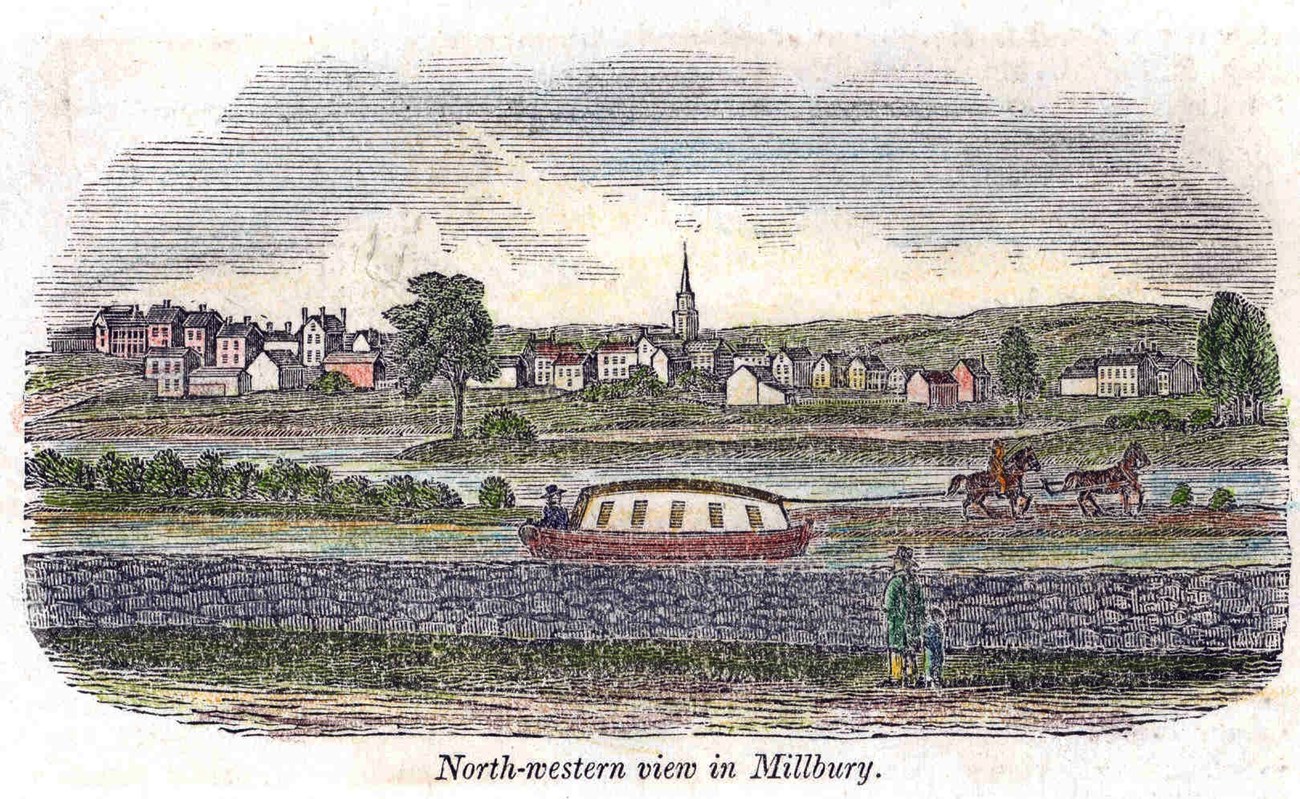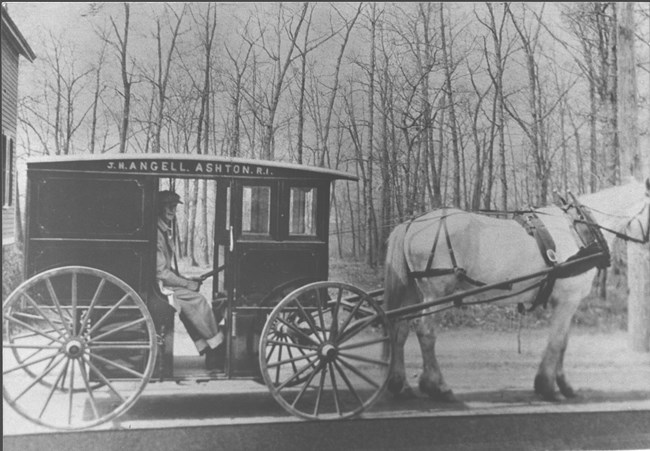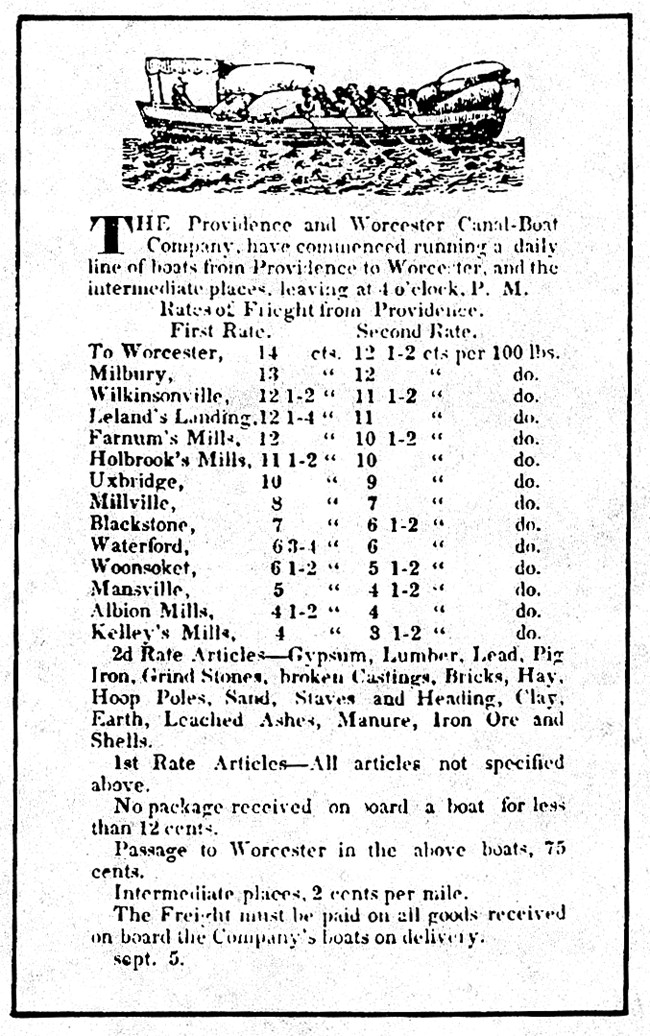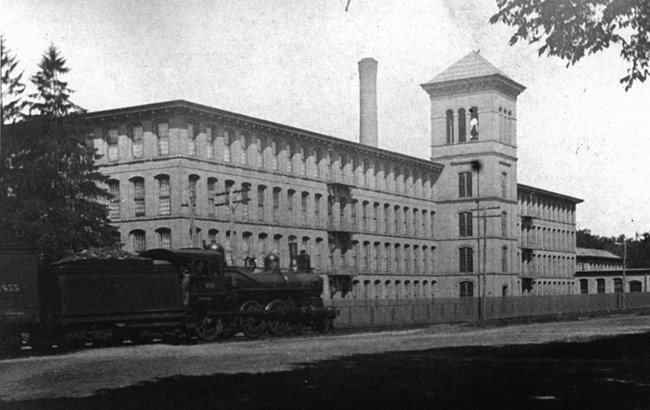
The Native American tribes of the Narragansett, Nipmuc, and Wampanoag used river crossings and game routes to travel great distances. These tribes, part of the greater Algonquin peoples, maintained trade routes and communication with people as far west as modern-day New York. Numerous river crossings along the Blackstone provided the easiest means of crossing Narragansett Bay. English settlers adopted many of these Native American highways for their own purposes. Providence, Rhode Island and Pawtucket, Rhode Island were both built at along important trade routes. Many of the earliest English settlements were located at key river crossings. 
Travel on this early road system was slow. These routes were poorly maintained and expensive. By the 1820s, it cost the same price to transport goods from Worcester, Massachusetts to Providence by road as it did to ship the same amount of goods from Boston to London, England. 
Two horse teams pulled each canal barge. Going about four miles per hour, canal barges could make the trip from Worcester to Providence in two days. This increased speed via an artificial waterway greatly helped the mill owners along the river transport raw materials and finished goods up and down the length of the Valley. The canal faced several setbacks and was especially threatened by the introduction of the Boston and Worcester Railroad (1835) and the Boston Providence Railroad (1835). The Blackstone Canal Company floundered for another 13 more years. The final blow came with the opening of the Providence and Worcester Railroad in 1847. The following year the Blackstone Canal went out of business. 
With the advent of the automobile, people once again looked for new and improved road networks. Throughout the early to mid-twentieth century, a highway system enabled the reliable transportation of goods by automobile. 
In a little over a century, the residents of the Blackstone Valley went from using the same types of transportation available to Julius Caesar to watching their fellow citizens land on the moon. The Industrial Revolution was a catalyst for such dramatic change. The Blackstone Valley, the birthplace of the American Industrial Revolution, was also at the center of transportation revolution that took humanity to the moon. People, Places and Stories
|
Last updated: May 25, 2025



